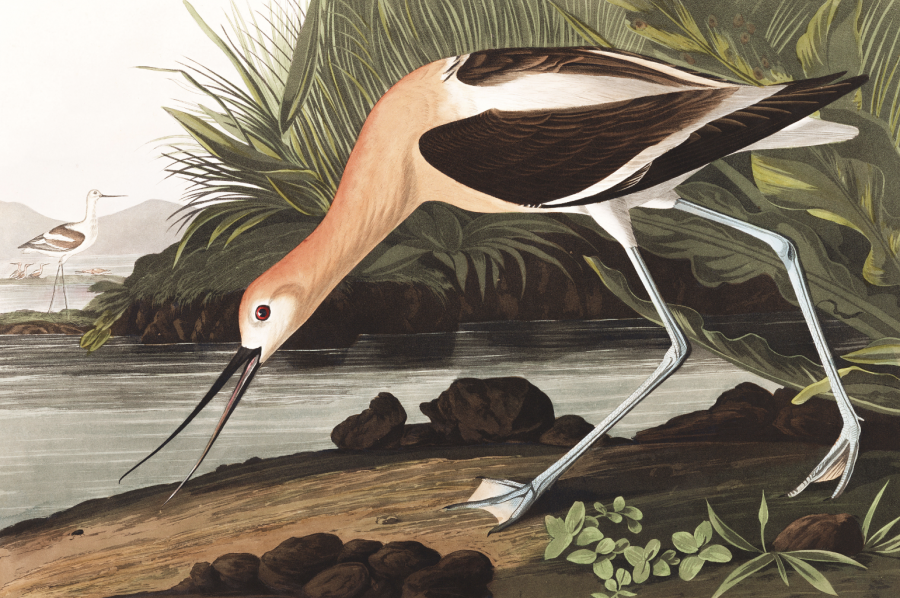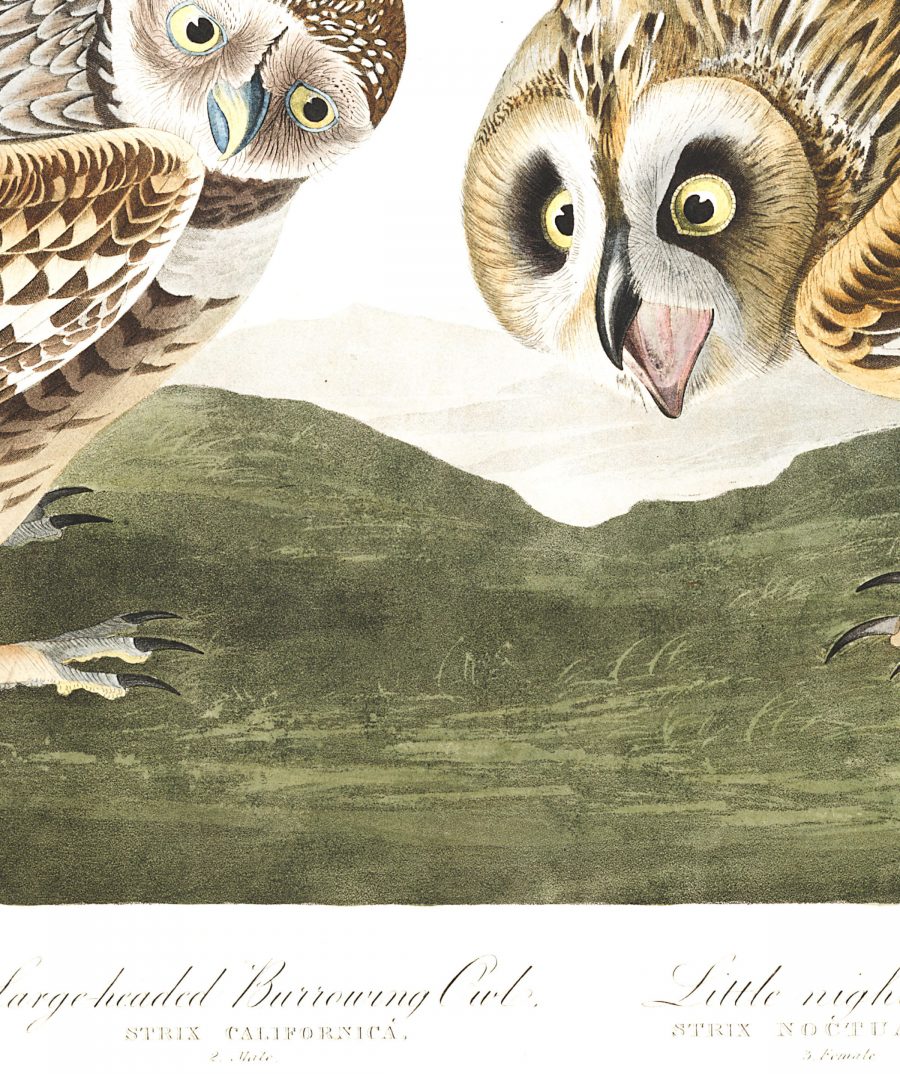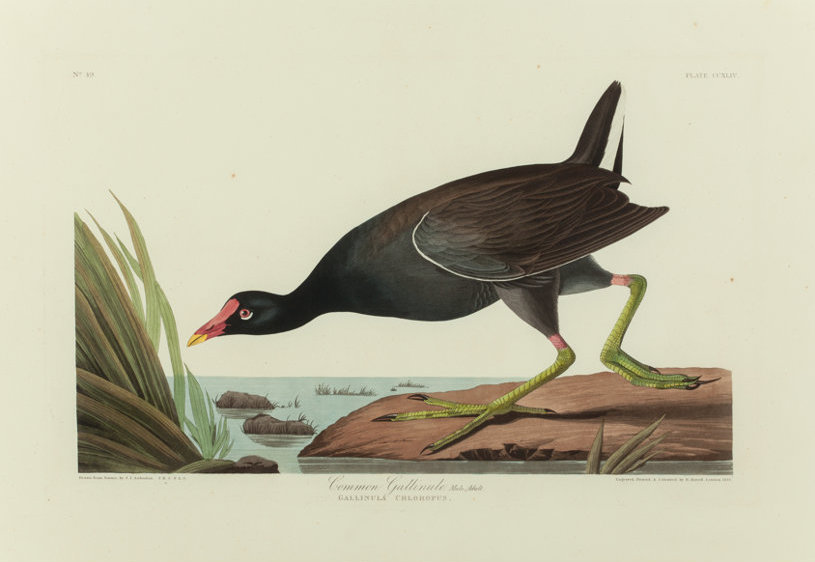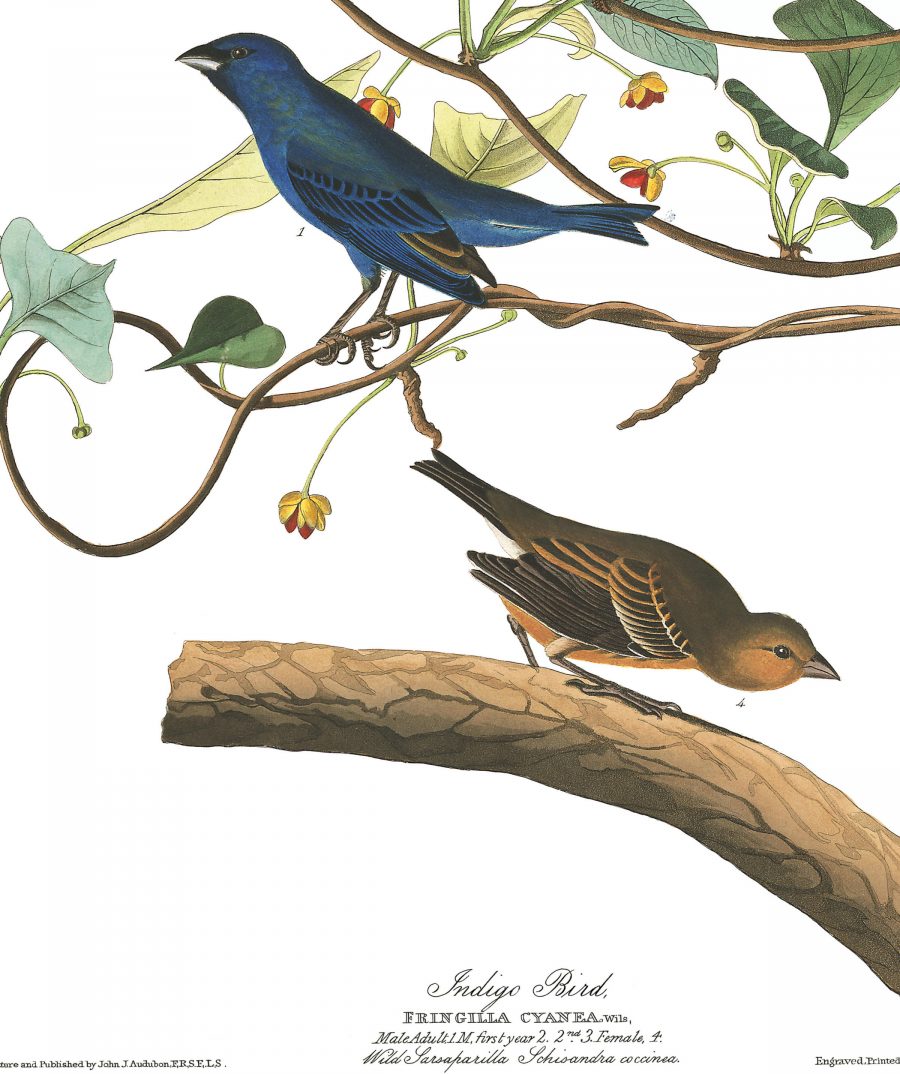[Most Recent Entries] [Calendar View]
Friday, October 11th, 2019
| Time | Event |
| 6:00a | Free: Download the Sublime Sights & Sounds of Yellowstone National Park Moments before writing these words I was feeling a little stressed—a not uncommon experience for most everyone these days. Then I watched the 25-second video of a bighorn sheep, above, and something happened. Not an epiphany or moment of Zen. Just a momentary suspension of human woe as the animal silently munched, a creature so unlike myself and yet so motivated by the same basic needs. How much better to observe the sheep firsthand, in its home at Yellowstone National Park? But perhaps we can, through our computers, touch into a little of the remedy Oliver Sacks suggested for our modern traumas. Nature gives us “sense of deep time,” the neurologist wrote, which “brings a deep peace with it, a detachment from the timescale, the urgencies of daily life… a profound sense of being at home, a sort of companionship with the earth.” Research has found that watching nature documentaries can bring on real contentment, confirming what millions of National Geographic devotees already know. Now, at the National Park Service’s site, you can immerse yourself in virtual visits with not only our silent bighorn sheep friend, but the song of a mountain bluebird, or choruses of howling wolves. The audio library contains dozens more such melodious and haunting sounds from Yellowstone’s biophony. The video library is replete with not only short clips of animals doing what animals do, but also video tours like that above, in which we learn how park rangers capture and handle bison in their conservation efforts at the park. Then there are stunning landscape videos like that below of Lower Falls viewed from Lookout Point in the spring of 2017, with soothing natural white noise from the rushing water and blowing wind. [Error: Irreparable invalid markup ('<div [...] http://cdn8.openculture.com/>') in entry. Owner must fix manually. Raw contents below.] <div class="oc-video-container"/>
<p>Moments before writing these words I was feeling a little stressed—a not uncommon experience for most everyone these days. Then I watched the 25-second video of a bighorn sheep, above, and something happened. Not an epiphany or moment of Zen. Just a momentary suspension of human woe as the animal silently munched, a creature so unlike myself and yet so motivated by the same basic needs.</p>
<p>How much better to observe the sheep firsthand, in its home at Yellowstone National Park? But perhaps we can, through our computers, touch into a little of the remedy <a href="https://www.brainpickings.org/2018/07/17/oliver-sacks-beauty-deep-time/">Oliver Sacks suggested for our modern traumas</a>. Nature gives us “sense of deep time,” the neurologist wrote, which “brings a deep peace with it, a detachment from the timescale, the urgencies of daily life… a profound sense of being at home, a sort of companionship with the earth.”</p>
<div class="oc-center-da"/>
<p><a href="https://asset-manager.bbcchannels.com/workspace/uploads/bbcw-real-happiness-white-paper-final-v2-58ac1df7.pdf">Research has found</a> that watching nature documentaries can bring on real contentment, confirming what millions of <em>National Geographic</em> devotees already know. Now, at the National Park Service’s site, you can immerse yourself in virtual visits with not only our silent bighorn sheep friend, but the <a href="https://www.nps.gov/yell/learn/photosmultimedia/sounds-mountainbluebird.htm">song of a mountain bluebird</a>, or <a href="https://www.nps.gov/yell/learn/photosmultimedia/sounds-wolves.htm">choruses of howling wolves</a>. The <a href="https://www.nps.gov/yell/learn/photosmultimedia/soundlibrary.htm">audio library</a> contains dozens more such melodious and haunting sounds from Yellowstone’s <a href="https://www.anthropocenemagazine.org/2017/08/biophony/">biophony</a>.</p>
<div class="oc-video-container"/>
<p>The <a href="https://www.nps.gov/yell/learn/photosmultimedia/videolibrary.htm">video library</a> is replete with not only short clips of animals doing what animals do, but also video tours like that above, in which we learn how park rangers capture and handle bison in their conservation efforts at the park. Then there are stunning landscape videos like that below of Lower Falls viewed from Lookout Point in the spring of 2017, with soothing natural white noise from the rushing water and blowing wind.</p>
<div class="oc-video-container"http://cdn8.openculture.com/>
<p>All of this content is available for download and free for anyone to use. Remix <a href="https://www.nps.gov/yell/learn/photosmultimedia/soundlibrary.htm">the sounds</a> of falling snow, geysers, and mountain lions; make as many nature gifs as you desire. As you do, bear in mind that while humans might greatly benefit—both psychologically and culturally—from the digital preservation of the natural world, the true purpose may be to help us understand why we need to step back and preserve the real thing.</p>
<div class="oc-video-container"/>
<p>Just above see a (nondownloadable) video from Yellowstone on the importance of listening to and conserving the land’s natural soundscapes—a feature of the world that best thrives in the near absence of human involvement.</p>
<p>Enter the <a href="https://www.nps.gov/yell/learn/photosmultimedia/soundlibrary.htm">sound library</a> here, and <a href="https://www.nps.gov/yell/learn/photosmultimedia/videolibrary.htm">the video library here</a>.</p>
<p>via <a href="https://kottke.org/19/10/yellowstone-national-parks-sound-video-libraries-are-free-for-anyone-to-use">Kottke</a></p>
<p><strong>Related Content:</strong></p>
<p><a href="http://www.openculture.com/2017/12/how-the-japanese-practice-of-forest-bathing-can-lower-stress-levels-and-fight-disease.html">How the Japanese Practice of “Forest Bathing”—Or Just Hanging Out in the Woods—Can Lower Stress Levels and Fight Disease</a></p>
<p><a href="http://www.openculture.com/2017/07/50-hours-of-nature-soundscapes-from-the-bbc.html">Watch 50 Hours of Nature Soundscapes from the BBC: Scientifically Proven to Ease Stress and Promote Happiness & Awe</a></p>
<p><a href="http://www.openculture.com/2016/05/the-british-librarys-sounds-archive-presents-80000-free-audio-recordings.html">The British Library’s “Sounds” Archive Presents 80,000 Free Audio Recordings: World & Classical Music, Interviews, Nature Sounds & More</a></p>
<p><a href="http://www.openculture.com/2017/03/10-hours-of-ambient-arctic-sounds-will-help-you-relax-meditate-study-sleep.html">10 Hours of Ambient Arctic Sounds Will Help You Relax, Meditate, Study & Sleep</a></p>
<p><a href="http://about.me/jonesjoshua"><em>Josh Jones</em></a><em> is a writer and musician based in Durham, NC. Follow him at <a href="https://twitter.com/jdmagness">@jdmagness</a>.</em></p>
<!-- permalink:http://www.openculture.com/2019/10/free-download-the-sublime-sights-sounds-of-yellowstone-national-park.html--><p><a rel="nofollow" href="http://www.openculture.com/2019/10/free-download-the-sublime-sights-sounds-of-yellowstone-national-park.html">Free: Download the Sublime Sights & Sounds of Yellowstone National Park</a> is a post from: <a href="http://www.openculture.com">Open Culture</a>. Follow us on <a href="https://www.facebook.com/openculture">Facebook</a>, <a href="https://twitter.com/#!/openculture">Twitter</a>, and <a href="https://plus.google.com/108579751001953501160/posts">Google Plus</a>, or get our <a href="http://www.openculture.com/dailyemail">Daily Email</a>. And don't miss our big collections of <a href="http://www.openculture.com/freeonlinecourses">Free Online Courses</a>, <a href="http://www.openculture.com/freemoviesonline">Free Online Movies</a>, <a href="http://www.openculture.com/free_ebooks">Free eBooks</a>, <a href="http://www.openculture.com/freeaudiobooks">Free Audio Books</a>, <a href="http://www.openculture.com/freelanguagelessons">Free Foreign Language Lessons</a>, and <a href="http://www.openculture.com/free_certificate_courses">MOOCs</a>.</p>
<div class="feedflare">
<a href="http://feeds.feedburner.com/~ff/OpenCulture?a=vZbwMhn5xQY:eO8W8yrnokc:yIl2AUoC8zA"><img src="http://feeds.feedburner.com/~ff/OpenCulture?d=yIl2AUoC8zA" border="0"></img></a> <a href="http://feeds.feedburner.com/~ff/OpenCulture?a=vZbwMhn5xQY:eO8W8yrnokc:V_sGLiPBpWU"><img src="http://feeds.feedburner.com/~ff/OpenCulture?i=vZbwMhn5xQY:eO8W8yrnokc:V_sGLiPBpWU" border="0"></img></a> <a href="http://feeds.feedburner.com/~ff/OpenCulture?a=vZbwMhn5xQY:eO8W8yrnokc:gIN9vFwOqvQ"><img src="http://feeds.feedburner.com/~ff/OpenCulture?i=vZbwMhn5xQY:eO8W8yrnokc:gIN9vFwOqvQ" border="0"></img></a> <a href="http://feeds.feedburner.com/~ff/OpenCulture?a=vZbwMhn5xQY:eO8W8yrnokc:qj6IDK7rITs"><img src="http://feeds.feedburner.com/~ff/OpenCulture?d=qj6IDK7rITs" border="0"></img></a> <a href="http://feeds.feedburner.com/~ff/OpenCulture?a=vZbwMhn5xQY:eO8W8yrnokc:I9og5sOYxJI"><img src="http://feeds.feedburner.com/~ff/OpenCulture?d=I9og5sOYxJI" border="0"></img></a>
</div><img src="http://feeds.feedburner.com/~r/OpenCulture/~4/vZbwMhn5xQY" height="1" width="1" alt=""/> |
| 11:00a | Download 435 High Resolution Images from John J. Audubon’s The Birds of America
In our experience, bird lovers fall into two general categories: Keenly observant cataloguers like John James Audubon … And those of us who cannot resist assigning anthropomorphic personalities and behaviors to the 435 stars of Audubon's The Birds of America, a stunning collection of prints from life-size watercolors he produced between 1827 and 1838. Our suspicions have little to do with biology, but rather, a certain zestiness of expression, an overemphatic beak, a droll gleam in the eye. The Audubon Society’s newly redesigned website abounds with treasure for those in either camp: Free high res downloads of all 435 plates. Mp3s of each specimen’s call. And vintage commentary that effectively splits the difference between science and the unintentionally humorous locutions of another age.
Take for instance, the Burrowing Owl, as described by self-taught naturalist Thomas Say (1787-1834):
The notes of ornithologist John Kirk Townsend (1809 – 1851) suggest that not everyone was as taken with the species as Say (who was, in all fairness, the father of American entomology):
The Common Gallinule, above, suggests that there's often more to these birds than meets the eye. His somewhat sheepish looking countenance belies the red hot love life Audubon recounts:
Being that we are firmly planted in the second type of bird lover's camp, this ornithological cornucopia mainly serves to whet our appetite for more Falseknees, self-described bird nerd Joshua Barkman’s beautifully rendered webcomic. Yes, Audubon’s Indigo Bird, aka Petit Papebleu, “an active and lively little fellow” who "possesses much elegance in his shape, and also a certain degree of firmness in his make” was separated by a century or so from "Mood Indigo"—we presume that’s the tune stuck in Barkman’s bird’s head—but he does look rather preoccupied, no? Possibly just thinking of mealworms… Explore Audubon’s Birds of America by chronological or alphabetical order, or by state, and download them all for free here. Related Content: Cornell Launches Archive of 150,000 Bird Calls and Animal Sounds, with Recordings Going Back to 1929 What Kind of Bird Is That?: A Free App From Cornell Will Give You the Answer Modernist Birdhouses Inspired by Bauhaus, Frank Lloyd Wright and Joseph Eichler Ayun Halliday is an author, illustrator, theater maker and Chief Primatologist of the East Village Inky zine. Join her in NYC on Monday, November 7 for her monthly book-based variety show, Necromancers of the Public Domain. Follow her @AyunHalliday. Download 435 High Resolution Images from John J. Audubon’s The Birds of America is a post from: Open Culture. Follow us on Facebook, Twitter, and Google Plus, or get our Daily Email. And don't miss our big collections of Free Online Courses, Free Online Movies, Free eBooks, Free Audio Books, Free Foreign Language Lessons, and MOOCs. |
| 2:11p | How Grace Slick Wrote “White Rabbit”: The 1960s Classic Inspired by LSD, Lewis Carroll, Miles Davis’ Sketches of Spain, and Hypocritical Parents I never know what to do with the fact that Jefferson Airplane became Jefferson Starship became Starship—purveyors of “We Built This City,” a “barnacle made of synthesizers and cocaine,” writes GQ, and an honored guest on worst-of lists everywhere. (Also a song co-written by none other than Elton John lyricist Bernie Taupin). It might seem peevish to get so worked up over how bad “We Built this City” is, if it didn’t derive from the legacy of one of the best bands of the 1960s. Even Grace Slick disavows it. “This is not me,” she says. Of course, by 1985, all of Slick’s best collaborators—the great Jorma Kaukonen, Jack Cassidy, Paul Kantner, Marty Balen, Spencer Dryden, et al.—had moved on, and it was that volatile collection of musical personalities that made psych rock classics like “Somebody to Love” and the slinky, druggy, Lewis Carroll-inspired bolero “White Rabbit” so essential. Grace Slick is a great singer and songwriter, but she needed a band as uncannily talented as Jefferson Airplane to fully realize her eccentric vision, such as the acid rock song about drug references in Alice in Wonderland, played in the style of Spanish folk music and Miles Davis’ Sketches of Spain. Before she wrote "White Rabbit," Slick dropped acid and listened to Davis’ jazz/folk/classical experiment “over and over for hours,” she told The Wall Street Journal in 2016. “Sketches of Spain was drilled into my head and came squirting out in various ways as I wrote ‘White Rabbit.’” No lesser band could have taken this swirl of influences and turned into what the Polyphonic video at the top calls a distillation of the entire era. But “White Rabbit” didn’t always have the perfectly executed intensity we know from 1967’s Surrealistic Pillow and Jefferson Airplane’s commanding performance at Woodstock (above). In 1965, LSD was still legal. Grace Slick was working, she tells WSJ, “as a couture model at I. Magnin in San Francisco.” Before signing on as the singer for Jefferson Airplane, she formed The Great Society with her then-husband Jerry Slick. She wrote “White Rabbit” for that ensemble and the band first performed it “in early ’66,” she says, “at a dive bar on Broadway in San Francisco.” Below, you can hear a 6-minute live version of The Great Society’s “White Rabbit.” It’s unrecognizable until Slick starts to sing over four minutes into the song. We are not likely to be reminded of Miles Davis. But when Slick brought “White Rabbit” to Jefferson Airplane, as the Polyphonic video demonstrates, they realized its full potential, references to Sketches of Spain and all. Recorded in 1966, the single “kicked off” the following year’s Summer of Love, “celebrating the growing psychedelic culture” and freaking out parents, who passionately hated “White Rabbit.” These were the very people Slick wanted to pay attention. “I always felt like a good-looking schoolteacher singing 'White Rabbit,'" she says. "I sang the words slowly and precisely, so the people who needed to hear them wouldn’t miss the point. But they did.” Slick’s own parents were a little freaked out when she started her first band, after an interview she gave the San Francisco Chronicle got back to them. “I argued in favor of marijuana and LSD,” she says. “It was painful for them, I’m sure, but I didn’t care whether they minded. Parents were criticizing a generation’s choices while sitting there with their glasses of scotch.” They were also regularly popping pills, although "the ones the mother gives you," she sang, "don't do anything at all." “To this day,” she says, “I don’t think most people realize the song was aimed at parents who drank and told their kids not to do drugs. I felt they were full of crap, but write a good song, you need a few more words than that.” And to turn a good song into an instant classic, you need a band like Jefferson Airplane. Related Content: Listen to Grace Slick’s Hair-Raising Vocals in the Isolated Track for “White Rabbit” (1967) Jefferson Airplane Plays on a New York Rooftop; Jean-Luc Godard Captures It (1968) Josh Jones is a writer and musician based in Durham, NC. Follow him at @jdmagness. How Grace Slick Wrote “White Rabbit”: The 1960s Classic Inspired by LSD, Lewis Carroll, Miles Davis’ Sketches of Spain, and Hypocritical Parents is a post from: Open Culture. Follow us on Facebook, Twitter, and Google Plus, or get our Daily Email. And don't miss our big collections of Free Online Courses, Free Online Movies, Free eBooks, Free Audio Books, Free Foreign Language Lessons, and MOOCs. |
| << Previous Day |
2019/10/11 [Calendar] |
Next Day >> |






